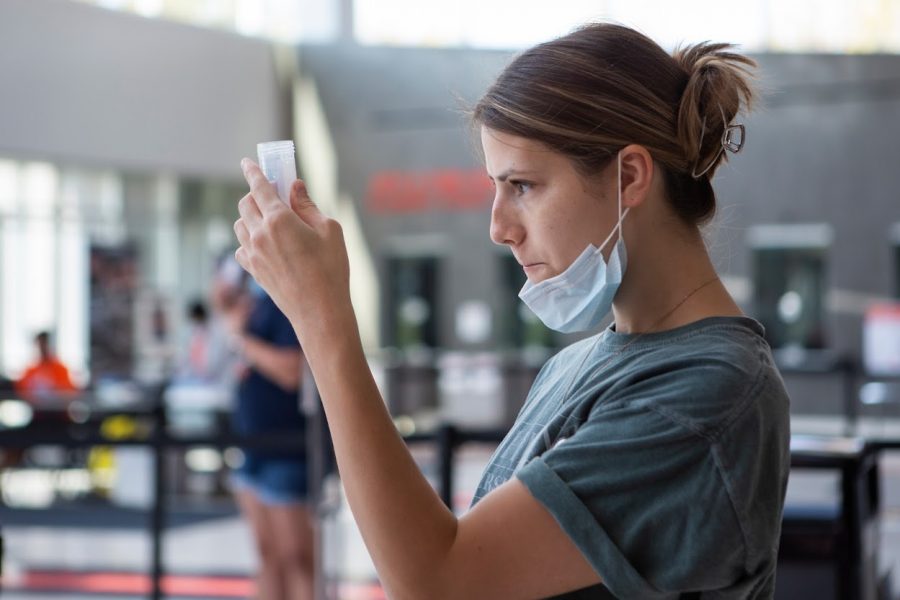Triumph of vaccine clouded by misinformation
Jessica Wynveen checks the level of saliva in her COVID-19 test tube on Oct. 9. While some are excited for the vaccine to be distributed, others are skeptical.
Jan 7, 2021
Last updated on Jan. 11, 2021 at 12:48 p.m.
States across the country have begun distributing vaccines for COVID-19 which has been met with a variety of responses. Many rejoice over the potential beginning of the end to the pandemic that has upset so many lives. Others, though, express skepticism and a reluctance to receive the vaccine.
Since last March when the country began to shut down in order to control the spread of the virus, people have been anxious to return to normal. Students are eager to get back in the classroom with their friends. People who were forced to convert their living room into a work-from-home office look forward to returning to their regular workspaces. Many will enjoy being able to leave their homes without a mask again.
Currently, the supply of the vaccine is limited. While it has been left to the states to determine how they should distribute the vaccine, the Centers for Disease Control and Prevention has issued a recommendation for prioritization.
First up should be healthcare workers and those working or living in long-term care facilities. Next are frontline essential workers and those 75 and older. Finally, the vaccine should go to those between 65 and 74 years old, those between 16 and 64 with underlying medical conditions and other essential works.
Get The Daily Illini in your inbox!
As vaccines become more widely available, recommendations will encompass wider groups.
Yet despite the potential to regain some of this normalcy, many have decided to reject the vaccine citing concerns for health and safety. Misinformation has been spread about what the vaccine does and how it will affect those who receive it. This has damaged efforts to distribute the vaccine as quickly and broadly as possible.
Where some individual’s concern stems from is the short timeline from the start of the pandemic to the creation and approval of the vaccine. Many say they are hesitant because they don’t know the possible long term side effects.
Because the severity of this emergency was so great, a significant amount of resources were put into developing a vaccine as quickly as possible. The quick development of a vaccine was not attained by cutting corners or skipping safety protocols but through the hard work of the scientists and all those involved.
The CDC stresses that these vaccines have gone through proper testing so that it will be as safe as possible. The data they have collected shows the vaccine is safe and effective. On their website, it says, “These data demonstrate that the known and potential benefits of this vaccine outweigh the known and potential harms of becoming infected with the coronavirus disease 2019 (COVID 19).”
After receiving the vaccine, one may experience some side effects that should go away within a couple of days. These side effects may include pain or swelling on the arm where the vaccine was injected. One may also experience fever, chills, tiredness, or headache.
The only instances that should cause concern according to the CDC are if swelling increases after 24 hours or if the side effects are particularly concerning or do not go away after a couple of days.
Receiving the vaccine cannot cause someone to get COVID-19. None of the vaccines currently being distributed in the U.S. or going through clinical trials contain a live virus. That means that the vaccine absolutely can not make someone sick with COVID-19.
The vaccine works by aiding the immune system in learning how to recognize and five the virus. This process does take a couple of weeks to complete and the current vaccines available do need two doses in order to be fully effective.
Even after receiving the vaccine, precautionary measures may still be in place for some time. Individuals may still be asked to wear masks and practice social distancing. The combination of these efforts should aid in stopping the pandemic.






